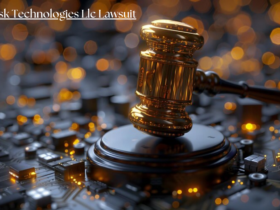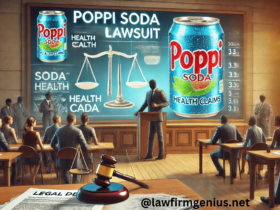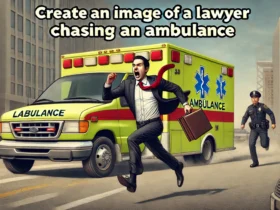What is Personal and Advertising Injury?
Personal and Advertising Injury refers to harm caused to someone’s reputation, privacy, or rights through certain actions, usually in business or advertising. This injury can include defamation, where false or harmful statements are made about a person or company. It also covers slander (spoken defamation) and libel (written defamation). Other examples include invasion of privacy, such as using someone’s image or personal information without permission, and copyright infringement in advertising, where a business uses another person’s creative work without authorization.
In the business world, Personal and Advertising Injury can lead to lawsuits if a company’s marketing materials, statements, or actions cause harm to another person or entity. Many businesses carry liability insurance that includes coverage for Personal and Advertising Injury to protect against legal claims. This insurance helps cover legal costs, settlements, or damages if someone sues for harm caused by defamation, privacy violations, or misleading advertising. Understanding Personal and Advertising Injury is important for businesses to avoid legal risks and maintain a good reputation.
Types of Personal and Advertising Injuries
Personal and Advertising Injuries can come in several forms, affecting individuals and businesses in different ways. Here are the main types:
- Defamation: This includes slander and libel. Slander is when someone makes false spoken statements that damage another person’s reputation. Libel is when false written statements harm someone’s reputation.
- Invasion of Privacy: This happens when someone uses another person’s private information or image without permission. It can include using someone’s photo in ads without consent or sharing private details without approval.
- False Arrest and Detention: This occurs when someone is wrongfully detained or accused of a crime they did not commit. If a business or individual wrongly accuses or detains someone, it can lead to personal injury claims.
- Copyright Infringement in Advertising: This is when a business uses someone else’s creative work, like images or text, in their ads without permission. It violates the original creator’s rights and can lead to legal issues.
How Personal and Advertising Injury is Covered Under Insurance
Personal and Advertising Injury is covered under liability insurance policies. This insurance helps protect businesses from financial loss if they are sued for causing harm through defamation, privacy invasion, or other related issues. When a business has liability insurance, it typically includes coverage for Personal and Advertising Injury. This means if the business is accused of making false statements, using someone’s image without permission, or similar actions, the insurance can help cover legal costs. This includes paying for lawyers, court fees, and any settlements or damages that may be awarded to the person who claims they were harmed.
Personal and Advertising Injury coverage is important for businesses because it provides financial protection against lawsuits that can arise from marketing practices or statements made about others. It helps ensure that businesses can handle legal disputes without facing severe financial difficulties.
Difference Between Personal Injury and Advertising Injury
Personal Injury and Advertising Injury are two types of harm that can affect individuals and businesses, but they are different in nature. Personal Injury usually refers to physical harm or emotional distress that results from accidents or negligence. It can include injuries from car accidents, slips and falls, or medical malpractice. This type of injury often involves medical treatment and compensation for physical damages and pain.
Advertising Injury, on the other hand, involves harm caused by statements or actions related to advertising and marketing. This includes defamation (such as slander or libel), where false statements harm someone’s reputation, or invasion of privacy, like using someone’s image or personal information without permission in ads. Advertising Injury focuses on non-physical harm related to false advertising and privacy violations. In summary, Personal Injury deals with physical and emotional harm, while Advertising Injury addresses harm caused by false or harmful advertising practices.
Examples of Personal and Advertising Injury Claims
Personal and Advertising Injury claims can arise from various situations where someone’s reputation, privacy, or rights are harmed. Here are some examples:
- Defamation: A business publishes false statements about a competitor, claiming they engage in unethical practices. The competitor may file a Personal and Advertising Injury claim for slander (spoken defamation) or libel (written defamation) to seek damages for the harm to their reputation.
- Invasion of Privacy: A company uses a person’s photo in their advertisements without permission. The person may file a Personal and Advertising Injury claim for invasion of privacy, seeking compensation for unauthorized use of their image.
- False Arrest: A retail store mistakenly accuses a customer of shoplifting and detains them. The customer could file a Personal and Advertising Injury claim for false arrest, seeking damages for the wrongful detention and harm to their personal dignity.
- Copyright Infringement: An ad agency uses copyrighted music or images without permission in their marketing materials. The original creator of the content might file a Personal and Advertising Injury claim for copyright infringement, seeking compensation for unauthorized use.
Liability and Legal Consequences for Personal and Advertising Injuries
Personal and Advertising Injuries can lead to significant legal and financial consequences. When a business or individual causes harm through defamation, privacy violations, or other advertising-related issues, they can be held liable. This means they are responsible for paying damages or compensation to the harmed party. If someone is found liable for Personal and Advertising Injuries, they may face various legal consequences. This can include paying damages to cover financial losses, emotional distress, or reputational harm. They might also have to pay legal fees for court cases and attorney costs.
In some cases, businesses can face injunctions which are court orders to stop certain actions, like removing false ads or ceasing unauthorized use of personal images. Repeated violations or severe cases can lead to higher penalties and more serious legal trouble. Overall, being found liable for Personal and Advertising Injuries can lead to substantial financial losses and impact a business’s reputation and operations.
Common Defenses Against Personal and Advertising Injury Claims
When facing Personal and Advertising Injury claims, there are several common defenses that can be used to counter the accusations:
- Truth: If the statements made are true, it can be a strong defense. For example, if a business makes claims about a competitor that are factually accurate, it can argue that there is no defamation or harm.
- Privilege: Certain statements made in specific settings, like in court or during legislative proceedings, may be protected by privilege. This means the statements cannot be used against the person or business in a Personal and Advertising Injury claim.
- Consent: If the person who is harmed gave permission for their image or information to be used, then it can be a defense. For instance, if a business used a photo with the person’s consent, it can argue that there was no invasion of privacy.
- Opinion: If the statements made are opinions rather than factual claims, it can be a defense. Opinions are generally protected from defamation claims because they are not statements of fact.
- Public Figure: If the harmed person is a public figure, they must prove that the statements were made with actual malice, meaning the statements were made with knowledge of their falsehood or with reckless disregard for the truth.
The Role of Legal Counsel in Personal and Advertising Injury Cases
In Personal and Advertising Injury cases, legal counsel plays a crucial role. They provide important help and guidance throughout the legal process. First, legal counsel helps clients understand their rights and the legal options available. They explain what Personal and Advertising Injury claims are and how they can impact a business or individual.
Next, legal counsel gathers evidence to support the case. This includes collecting documents, interviewing witnesses, and preparing legal arguments. They use this information to build a strong defense or to argue for compensation. During the legal proceedings, legal counsel represents their clients in court. They handle negotiations, file necessary documents, and argue the case in front of a judge or jury.
Additionally, legal counsel helps with settlements. They negotiate with the other party to reach a fair agreement without going to trial, if possible. Overall, legal counsel ensures that their clients receive proper legal representation and support in Personal and Advertising Injury cases.
How to Protect Your Business from Advertising Injury Claims
To protect your business from Advertising Injury claims, take these important steps:
- Verify Accuracy: Ensure all advertisements are truthful and accurate. Avoid making false claims about products or competitors. Double-check all information before publishing.
- Obtain Permissions: If using someone’s image, name, or other personal details, get their written consent. This helps prevent invasion of privacy claims.
- Use Clear Disclaimers: Include disclaimers in ads when necessary to clarify that certain statements are opinions or estimates, not facts. This helps defend against defamation claims.
- Review Advertising Practices: Regularly review your marketing strategies to ensure they comply with legal requirements. Update practices to align with the latest regulations and standards.
- Consult Legal Experts: Work with legal counsel to review advertising content before it is published. They can help identify potential risks and ensure all ads comply with the law.
Importance of Understanding Personal and Advertising Injury in Business
Understanding Personal and Advertising Injury is very important for any business. This knowledge helps protect a business from potential legal problems and financial losses. Personal and Advertising Injury includes issues like defamation, invasion of privacy, and copyright infringement. Knowing about these can help businesses avoid making false claims or using someone else’s work without permission. By understanding Personal and Advertising Injury, businesses can create ads and content that are accurate and lawful. This helps avoid lawsuits and the costs of legal battles.
Furthermore, being aware of these risks helps businesses develop better policies and training for employees. It ensures that marketing practices comply with legal standards and reduces the risk of harming someone’s reputation or privacy. In summary, understanding Personal and Advertising Injury is key for businesses to protect their reputation, avoid legal issues, and maintain good practices.
Conclusion
Understanding Personal and Advertising Injury is crucial for any business. It helps prevent legal issues and protects your reputation. By knowing what Personal and Advertising Injury involves, like defamation and invasion of privacy, you can avoid making false claims or using others’ work without permission. Businesses should take steps to ensure their advertising is accurate and legal. This includes getting permissions, using disclaimers, and consulting with legal counsel. These actions help avoid lawsuits and financial losses.
FAQs
What is Personal and Advertising Injury?
Personal and Advertising Injury refers to harm caused by actions like defamation, invasion of privacy, and copyright infringement. This type of injury can affect a person’s reputation or privacy through false statements or unauthorized use of personal information.
How can a business be affected by Personal and Advertising Injury?
A business can face lawsuits, financial losses, and damage to its reputation if it makes false claims, invades someone’s privacy, or uses copyrighted material without permission. Understanding these risks helps avoid legal trouble and maintain a good image.
What are some common defenses against Personal and Advertising Injury claims?
Common defenses include proving that the information is true, that the statements are opinions, or that the business had consent to use personal details. Additionally, statements made in certain protected contexts may not be actionable.
How can a business protect itself from Personal and Advertising Injury claims?
Businesses should ensure their advertisements are truthful, get permissions for using personal information, use disclaimers where necessary, and regularly review advertising practices. Consulting with legal counsel can also help avoid potential issues.
Why is it important to understand Personal and Advertising Injury?
Understanding Personal and Advertising Injury helps businesses avoid legal issues, protect their reputation, and create accurate and lawful marketing content. This knowledge is crucial for maintaining good practices and avoiding costly lawsuits.
Read For More Amazing Blogs Law Firm Genius.















Got a Questions?
Find us on Socials or Contact us and we’ll get back to you as soon as possible.